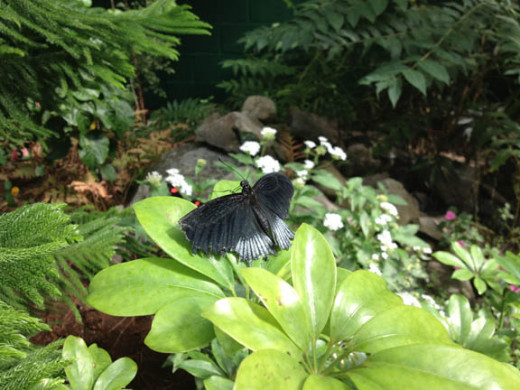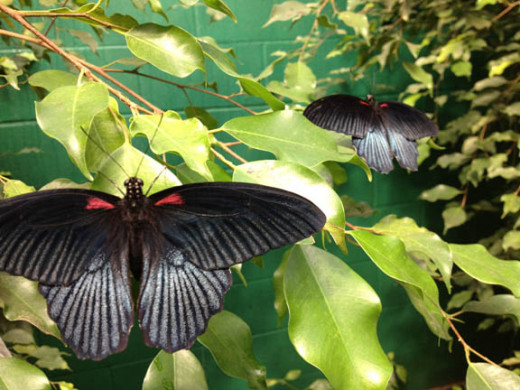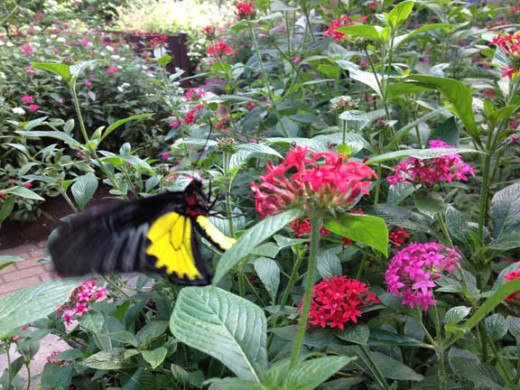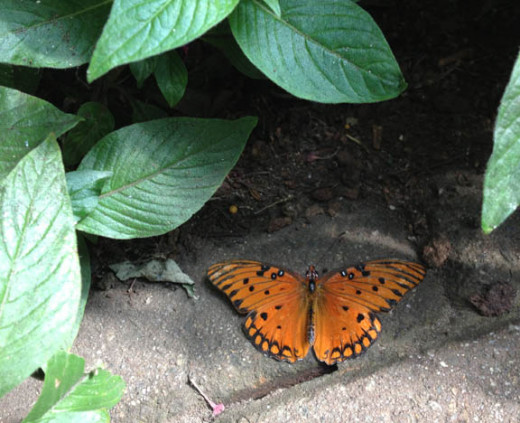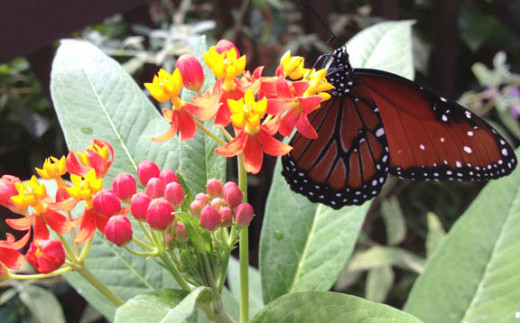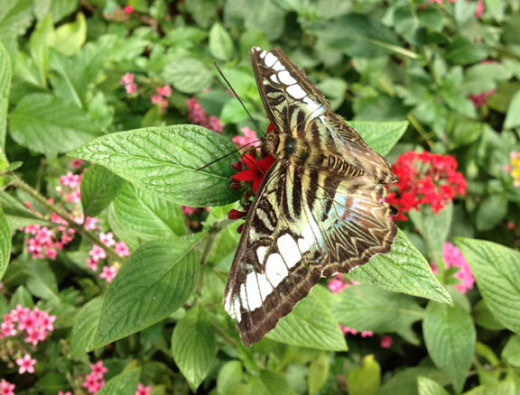- HubPages»
- Travel and Places»
- Visiting North America»
- United States
The World's A-Flutter: Spending the Day Among Nature's Most Beautiful Winged-Insects at The Butterfly Place Pavilion


There is something ethereal about butterflies. Perhaps it is their exquisite wing colors, or their dainty prance as they gently bounce from leaf to leaf or flutter through the air so effortlessly.
Whatever the reason, the butterfly has long been admired by many.
George Leslie's hobby for a goodly portion of his life was butterflies. So much so, that at the age of 59, Leslie decided to turn his passion for butterflies into a business.
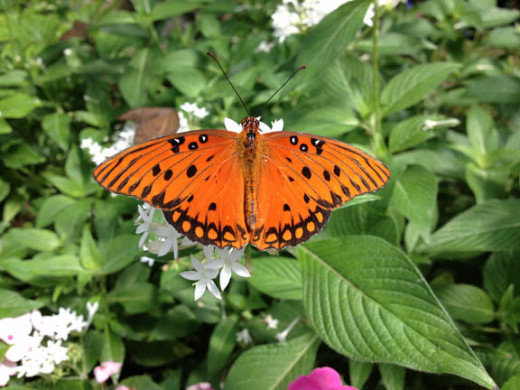

Leslie designed and built the 3,000 square foot atrium in Westford, Massachusetts of wood, glass and steel.
The Butterfly Place was one of the first indoor butterfly gardens in the country.
There is a streaming video that tells about the butterfly's biology and basic life cycle, including that of its' amazing metamorphosis.
The atrium, where the free-flying butterflies take flight, has several benches so that visitors can sit and watch the many varieties of butterflies go by.
It is often filled with excited children visiting from local schools. If you wish to know which butterfly species are in the atrium, simple purchase the butterfly directory for a dollar.

- The Butterfly Place - Westford, Massachusetts: An indoor garden filled with hundreds of free-flying
The Butterfly Place is an indoor living environment which has been carefully designed for the propagation and development of butterflies. Our conservatory contains up to 500 butterflies representing as many as 50 different species.


The Silkworm Moth
There are thousands of species of moths that live throughout the world. Like their relatives, the butterfly, moths have various colored wings which are covered with tiny scales and, they too, have antennae on their heads which are for sensing their surroundings.
The silkworm moth is a special moth in that it is domesticated. For centuries, these moths have been raised and cared for in order to produce silk. It is very rare to even find this type of moth living in the wild. Today, they live on farms in countries such as Japan.

How to Create Your Own Butterfly Garden
- Create your own butterfly garden | Homes | Green Living
Green Living offers suggestions for how you can attract butterflies to your home.




Quarantine Emergence Enclosure
Kept within this glass case are those chrysalides that The Butterfly Place has imported from other dealers from other countries. The enclosure is mandated by the U.S.D.A. for two reasons:
1. Some chrysalides from other parts of the world, may contain parasitic wasps or flies not found here in the United States. If such parasitic wasps or flies should escape, it could pose a danger to our local species of butterflies.
2. Unbeknown to those handling such insects, other chrysalides may be diseased, as well. If an emerged butterfly is found to be free of disease, it is moved to the flight area. If, however, the butterfly is in someway mal-formed or does not emerge from its' chrysalides, it is frozen, and autoclaved in order to kill any existing organisms.
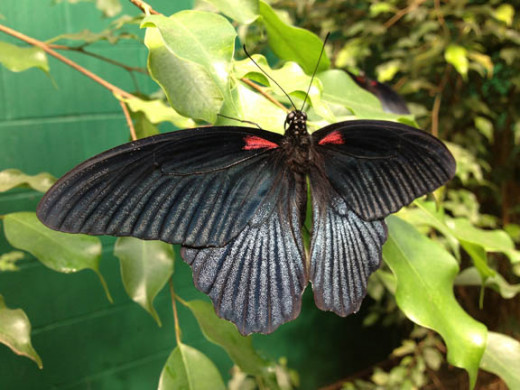
A butterfly has a short life. On average, it only lives about fourteen days. Several species survive a bit longer, sometimes up to a year depending on their geography and diet.
Butterflies and moths, both exhibited at The Butterfly Place, are close relatives, although there are a few differences among them, they appear to be incredibly similar. Butterflies, generally rest with their wings folded above their bodies, while moths tend to fold their wings alongside their bodies, while at rest.
Butterflies are daylight creatures. They do most of their flying when the sun is up. Like solar panels, butterflies will soak in the sun to gain the much needed warmth. Moths, on the other hands, fly most of the time at night.
It's estimated that there are approximately 150,000 different species of butterflies and moths, 28,00 of which are butterflies. Most of the butterflies in the world live in more tropical temperatures, however, for those that live in chillier climates, the northeast, they will either hibernate or migrate to avoid the colder temperatures. The Monarch is one such butterfly that migrates and, indeed, the Monarch is said to migrate the farthest of all the butterflies.
Butterflies are exceptional good fliers. In order to fly, a butterflies' body temperature must register above 86 degrees. Once mobile, some butterfly species can fly as fast as 30 miles per hour. Others, as we've all witnessed, fly a much slower 5 miles per hour.
The wings of a butterfly are made up of many, tiny, overlapping scales. Both the males and females of a species have similar wing color, but the male, like many male species have a more vivd hue in order to attract their future mates.
When a butterfly begins to age their wing colors will fade. As their age progresses, their wings will begin to look haggard.


Under the Microscope
Using an Scanning Electron Microscope, the butterfly can be seen in an entirely new way. There is a small exhibit featured at The Butterfly Place that gives us an up-close-and-personal look at the butterfly.
With its' continual movement and small size, it is difficult to truly see what a butterfly looks like. With these images, details that are often overlooked can be viewed in crisp detail.
While a traditional light microscope uses photons of light to magnify an image, an electron microscope uses wavelengths of electrons capturing much smaller images, however, because color is a function of the wavelength of light, a Scanning Electron Microscope only displays photos in black and white.
The Luna Moth is a vibrant green moth common to the northeast. Munching on oak leaves safely kept behind a glass, there were 4 bright green caterpillars.
The Luna Moth produce twice a year, here in the northeast. The female will lay between 100 and 300 eggs, perhaps more if the climate is favorable.
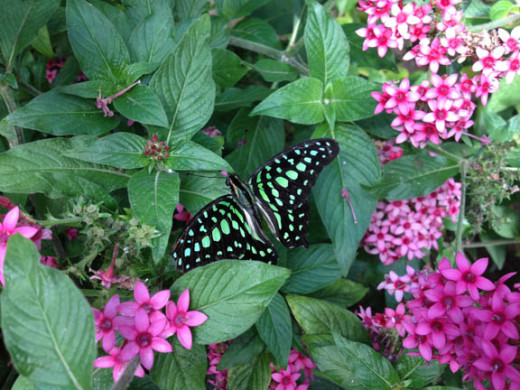
Butterflies Call the Great Outdoors Their Home
Butterflies consider the openness of the world to be their home. As such, they do not build homes or nest in which to rest or rear their young. When the weather is inclement, butterflies merely hang on the underside of foliage or under the safety of eaves.
There are some butterflies that choose to hide in woodpiles or hibernate in trees until spring, but no species uses a "butterfly house". A "butterfly house" is often sold at craft fairs and has long slits in which butterflies can enter.
According to research, butterflies may, on occasion, use a "butterfly house", but they will more often choose the underside of a plant.
Wasps, on the other hand, may be attracted to such a house because they will use any structure available to them to keep from the rain. The unfortunate side effect of having a "butterfly house" in your garden is that wasps will reduce your butterfly population.























The Painted Lady
The Painted Lady butterfly is from Australia and like its' native comrades, requires a warm temperature in which to live and thrive. The display at The Butterfly Place demonstrates the life cycle of this particular species and is kept at a temperature between 80-82 degrees.
Looking closely, you will see very tiny blue eggs deposited on the plant leaves. The eggs are a bright, almost neon, blue color. If you look even closer, you may see newly hatched caterpillars beginning their next cycle of life.
The small cups contain various size caterpillars. The small black magnets which have been glued to the container will later suspend the chrysalides until the butterfly emerges.
The Painted Lady



There are several different flowers and plants in the butterfly atrium. While the butterflies are flying about, you will see many, with their long tongues, retrieving nectar from the flowers.

While you wander the atrium, you'll begin to notice movement on the ground. Tiny Chinese quail (a non-flying bird) are kept in the atrium to clean up after the butterflies. The quail eat the insects that come into the atrium, as well as, the dead butterflies.
While I was there, I notice this small clutch of eggs nestled together behind a small bush.



















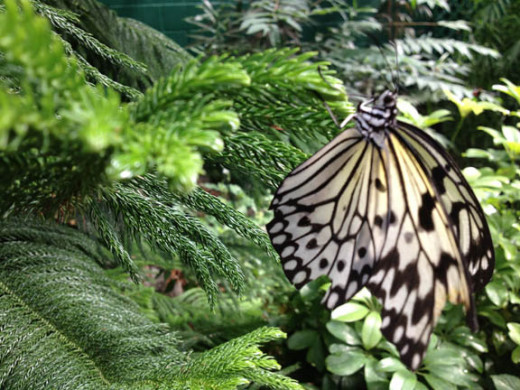

Where can you go to learn more about butterflies in the United States?
- List of Butterfly Farms found in the US. Plus Rear Your Own.
Find a Butterfly Farm to visit, or get a kit to Farm your OWN butterflies!
...or around the world?
- Where to See Butterflies | Butterfly Houses Around the World | Live Tropical Butterfly Exhibits Gard
List of Butterfly Houses, Botanical Gardens, Butterfly Gardens, Nature Centers and Butterfly Museums from Around the World
The Enchanted Butterfly and How We Adorn it
- winged world
If you, too, delight in the magic of all-things-butterfly, I welcome you to my Pinterest board, winged world, where I curate butterfly elements of all sorts.
Did You Know?
If you decide to take a school group or your children to the Butterfly Place, here are a few facts that you can quiz them on for fun:
* There are nearly 20,000 types of butterflies around the world.
*Most butterflies fly during the day and when they rest - their wings are upright.
*Butterflies smell with their antennae and taste with their feet!
*Butterflies get their amazing colors from iridescent loose, powdery scales.
*Birds avoid eating the Monarch butterfly because Monarch caterpillars feed on milkweed, which makes them taste bitter and is poisonous to birds.
*Adult butterflies live on average about a month. Some small species live only a few days, while others can live as long as 10 months.









